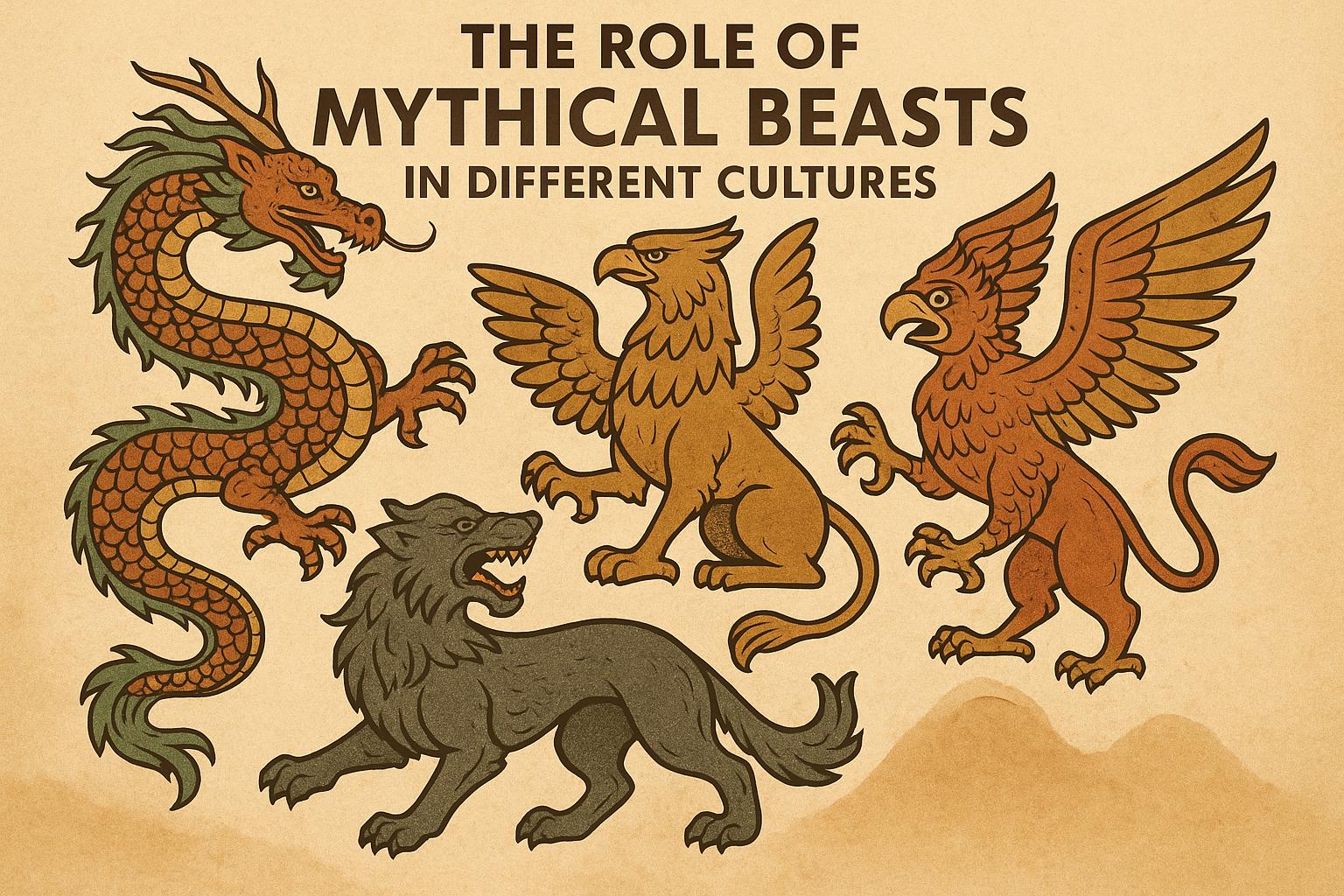The Role of Mythical Beasts in Different Cultures

The Significance of Mythical Beasts in Human Culture
Mythical beasts have been an intrinsic part of human culture, resonating throughout various societies and epochs. These creatures often extend beyond being mere figments of imagination; they serve as symbols, convey moral lessons, and provide a deeper understanding of human values and fears. Their significance is woven into the tapestry of mythology, offering both reflection and insight into human life and nature.
Symbolism in Mythical Creatures
Throughout history, mythical beasts have embodied complex ideas and themes, symbolizing a range of concepts that transcend cultural boundaries. One can observe this through the depiction of dragons, which are prominent symbols in both Eastern and Western cultures but serve diverging purposes. In Chinese culture, dragons are often seen as benevolent creatures associated with prosperity and good fortune. This stands in contrast to Western folklore, where dragons are typically depicted as malevolent beings representing chaos and destruction. Such differences highlight the diverse interpretations and roles these creatures fulfill in various mythologies.
Role in Creation Myths
The presence of mythical beasts in creation myths underscores their symbolic potency. In Hindu mythology, the cosmic serpent Ananta is integral to the narrative of world creation, serving as a bed for Lord Vishnu while he dreams the universe into existence. Ananta embodies the endless nature of time, depicting the cyclical concept of creation and destruction. Similarly, Norse mythology involves the serpent Jörmungandr, which plays a crucial role not only in creation but also in the world’s eventual destruction during Ragnarök. This complex interplay illustrates how mythical creatures encapsulate the dual nature of creation and annihilation.
Guardians of Knowledge
Many mythical creatures assume the role of guardians of knowledge and wisdom, acting as intermediaries between the human and divine realms. The Sphinx, prominent in both Egyptian and Greek mythology, is renowned for posing riddles that one must solve to gain hidden truths or access. This creature symbolizes the pursuit of knowledge and the challenge inherent in acquiring it. Similarly, the Benu bird, akin to the Phoenix, stands as a symbol of rebirth and knowledge in ancient Egyptian mythology, representing the continuity of wisdom through cycles of destruction and renewal.
Moral Lessons and Ethical Codes
Mythical beasts often embody moral and ethical lessons, serving as allegorical figures through which societies convey cultural values and norms. The unicorn, entrenched in Western tradition, is a symbol of purity and virtue, representing the unattainable ideal of innocence. In contrast, the trickster figure of Anansi the spider in African folklore teaches lessons about wisdom and cunning. Anansi’s stories frequently involve outsmarting others or subverting authority, illustrating the importance of intelligence and strategic thinking. These narratives serve as a means of transmitting cultural values and norms, ensuring their continuity across generations.
Fear and Cautionary Tales
In addition to moral teachings, mythical beasts often symbolize fear and serve as cautionary tales. The Wendigo from Algonquian legends embodies insatiable greed and the dangers of excess, cautioning individuals against overindulgence and advocating for moderation. The creature is portrayed as a malevolent spirit that preys upon humans, warning them of the destructive consequences of unchecked ambition and selfishness. Similarly, the Chupacabra in Latin American tales serves as a deterrent against venturing into unknown territories or abandoning communal safety. The creature’s myth warns of the perils that lurk beyond the safety of the known world.
Evolution through Time
The evolving portrayal of mythical beasts reveals their adaptability to cultural shifts over time. These creatures have transcended their origins in folklore to become staple figures in modern literature, films, and media, where they are often reimagined through a contemporary lens. For example, vampires have undergone a significant transformation from the horrific creatures steeped in Eastern European folklore to complex characters exploring themes of immortality, morality, and the human condition. These reinterpretations reflect the ever-changing nature of human storytelling and its ability to incorporate contemporary societal themes into age-old myths.
Global Impact and Shared Heritage
The universality of mythical beasts across various cultures suggests a shared human experience. These creatures offer a common ground for storytelling, providing a means for cultural exchange and fostering an understanding of the diversity and unity within human experiences. By serving as conduits for shared narratives, mythical beasts unite disparate cultures, creating a global mythological heritage that transcends geographical and temporal boundaries.
In summary, mythical beasts are powerful vehicles for expressing human hopes, fears, and imagination. They play diverse roles across cultures, serving as symbols, conveying moral lessons, and enriching cultural narratives. By examining the roles these creatures play, one gains insight into the human psyche, culture, and the timeless stories that define us. For those interested in exploring the rich traditions and modern interpretations of mythical creatures, resources such as National Geographic and Britannica provide a deeper dive into the world of mythology and its lasting influence on human culture.
Comments are closed.
Comments on 'The Role of Mythical Beasts in Different Cultures' (0)
Comments Feed